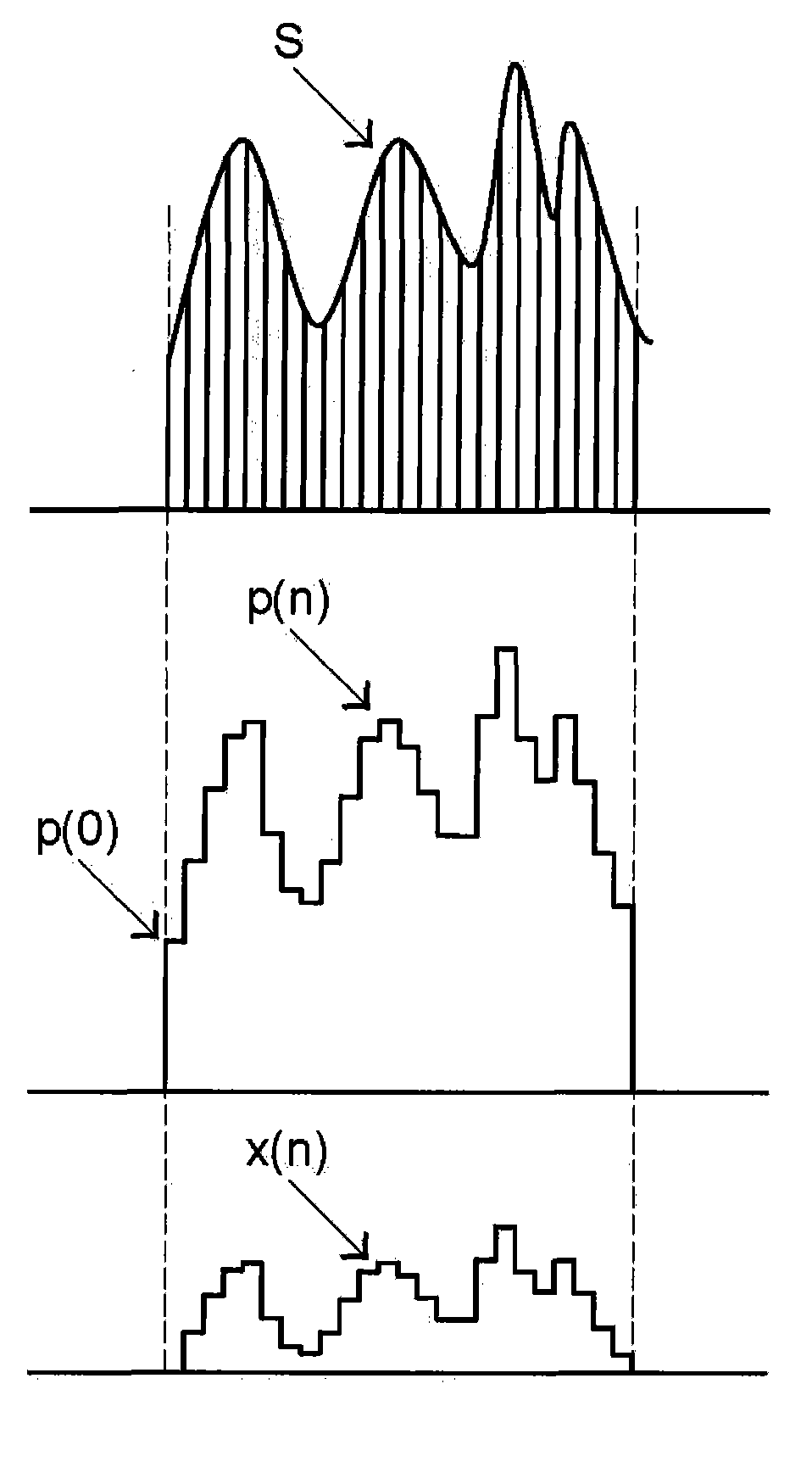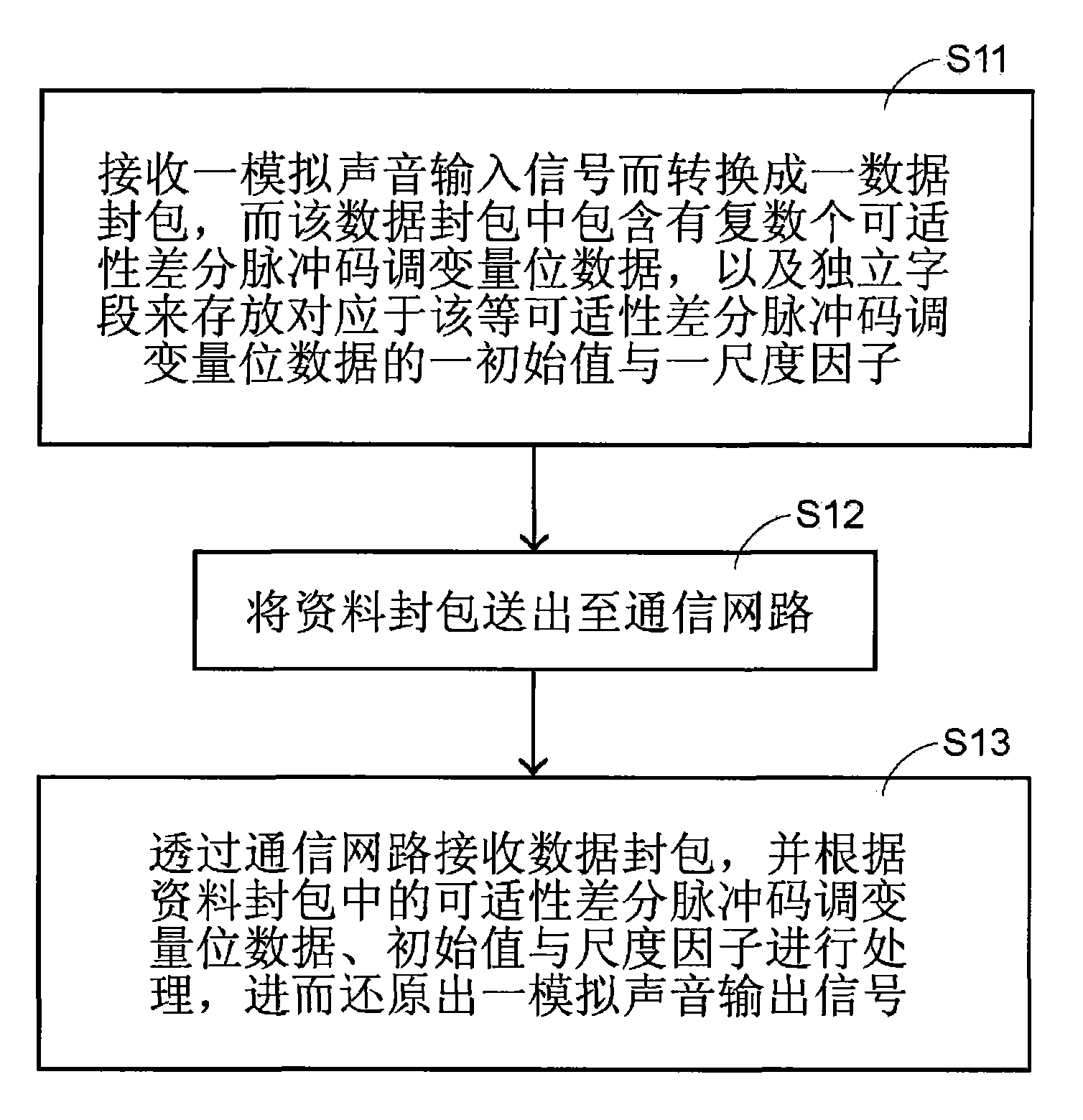Adaptive differential pulse-code modulation-demodulation system and method
A differential pulse and adaptable technology, applied in the field of adaptive differential pulse code modulation-demodulation system, can solve the problems of expensive hardware cost, complex design sound data, product competitiveness decline, etc., to reduce hardware complexity degree and cost effects
- Summary
- Abstract
- Description
- Claims
- Application Information
AI Technical Summary
Problems solved by technology
Method used
Image
Examples
Embodiment Construction
[0028] Figure 1(a) is a schematic diagram of the sampling operation developed by the present invention for the Adaptive Differential Pulse Code Modulation (ADPCM), where p(n) represents the result obtained after sampling a sound signal waveform S with a fixed sampling frequency Uncompressed digital sampling value, and x(n) represents the digital sampling value after differential operation and data compression processing, and x(0)=p0, x(1)=(p1-p0) / sf, x( 2)=(p2-p1) / sf and so on, among which p0 is called the basic pulse code modulation value (base PCM value), and sf is called the scale factor (scale factor).
[0029]And in order to reduce the required hardware cost of the data receiving end, the present invention proposes a kind of adaptive differential pulse code modulation-demodulation method as shown in Fig. 1 (b), this method comprises the following steps: Step S11: Receive an analog sound input signal and convert it into a data packet, and the data packet contains a plurali...
PUM
 Login to View More
Login to View More Abstract
Description
Claims
Application Information
 Login to View More
Login to View More - R&D
- Intellectual Property
- Life Sciences
- Materials
- Tech Scout
- Unparalleled Data Quality
- Higher Quality Content
- 60% Fewer Hallucinations
Browse by: Latest US Patents, China's latest patents, Technical Efficacy Thesaurus, Application Domain, Technology Topic, Popular Technical Reports.
© 2025 PatSnap. All rights reserved.Legal|Privacy policy|Modern Slavery Act Transparency Statement|Sitemap|About US| Contact US: help@patsnap.com



